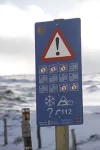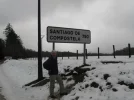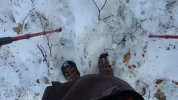- Time of past OR future Camino
- Too many and too often!
Two Brazilian pilgrims crossing the Route Napoleon ran into difficulties with the weather and contacted the emergency services by radio from the Izandorre refuge hut. They were rescued using an off-road vehicle - probably the one mentioned in a press article yesterday. In a post yesterday which has since been removed from the APOC Facebook group one young man described the treacherous conditions which he and a companion encountered crossing the high-level route despite it being officially closed and his companion's hypothermia symptoms. It appears there are still people ignoring the closure and running into dangerous situations.
http://navarra.elespanol.com/articu...ndorre-roncesvalles/20170313192457102257.html
http://www.noticiasdenavarra.com/20...quieren-un-vehiculo-para-rescates-en-la-nieve
http://navarra.elespanol.com/articu...ndorre-roncesvalles/20170313192457102257.html
http://www.noticiasdenavarra.com/20...quieren-un-vehiculo-para-rescates-en-la-nieve




























